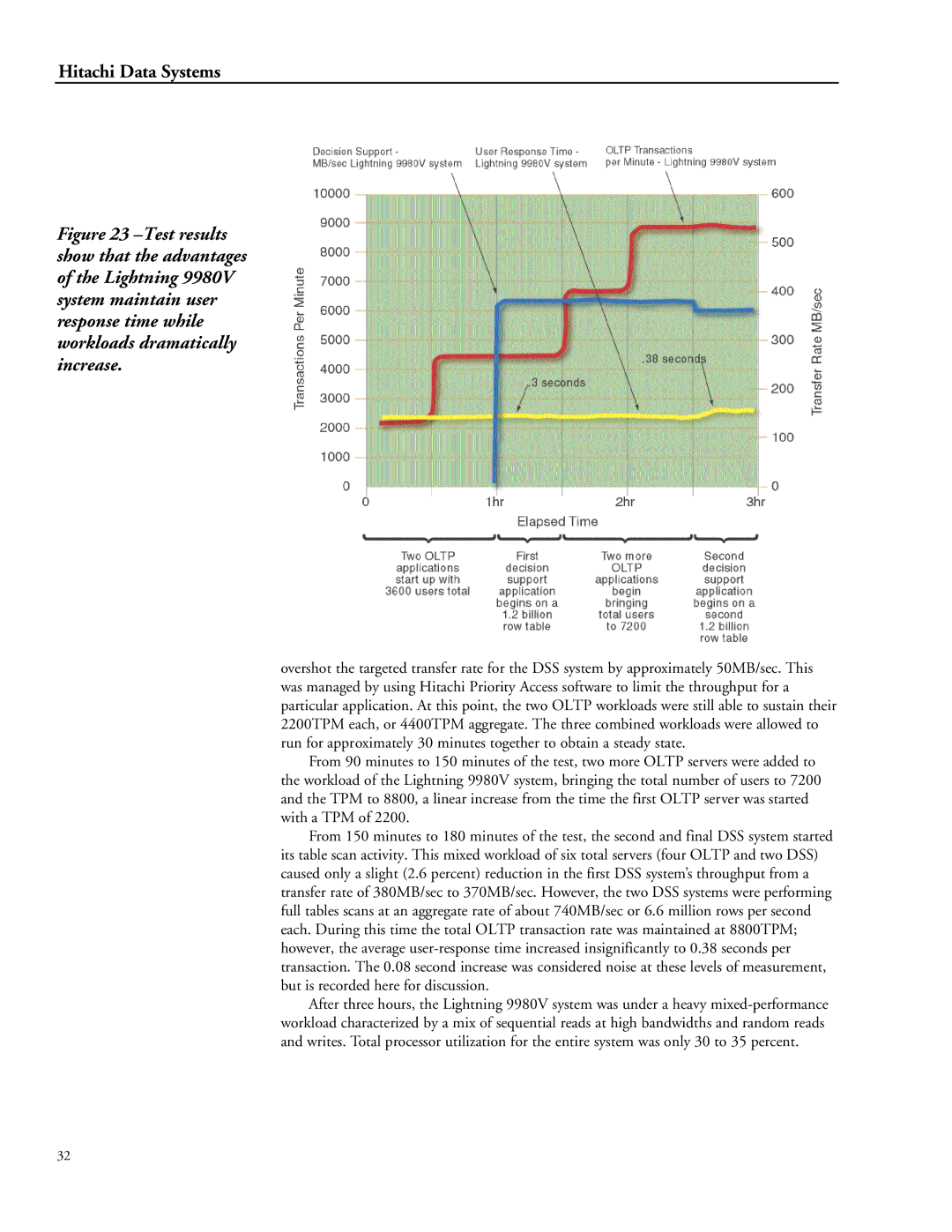
Hitachi Data Systems
Figure 23 –Test results show that the advantages of the Lightning 9980V system maintain user response time while workloads dramatically increase.
overshot the targeted transfer rate for the DSS system by approximately 50MB/sec. This was managed by using Hitachi Priority Access software to limit the throughput for a particular application. At this point, the two OLTP workloads were still able to sustain their 2200TPM each, or 4400TPM aggregate. The three combined workloads were allowed to run for approximately 30 minutes together to obtain a steady state.
From 90 minutes to 150 minutes of the test, two more OLTP servers were added to the workload of the Lightning 9980V system, bringing the total number of users to 7200 and the TPM to 8800, a linear increase from the time the first OLTP server was started with a TPM of 2200.
From 150 minutes to 180 minutes of the test, the second and final DSS system started its table scan activity. This mixed workload of six total servers (four OLTP and two DSS) caused only a slight (2.6 percent) reduction in the first DSS system’s throughput from a transfer rate of 380MB/sec to 370MB/sec. However, the two DSS systems were performing full tables scans at an aggregate rate of about 740MB/sec or 6.6 million rows per second each. During this time the total OLTP transaction rate was maintained at 8800TPM; however, the average
After three hours, the Lightning 9980V system was under a heavy
32
